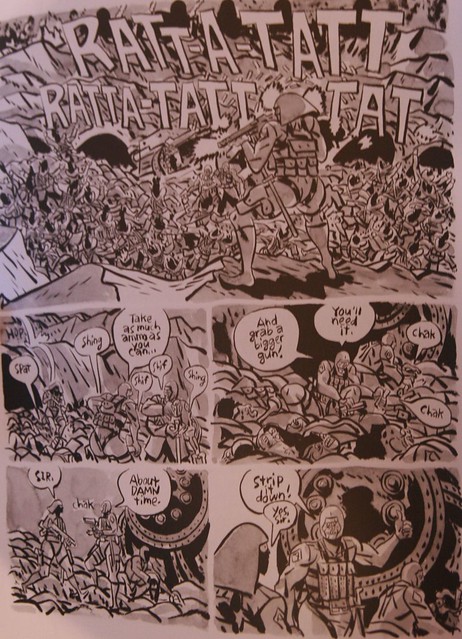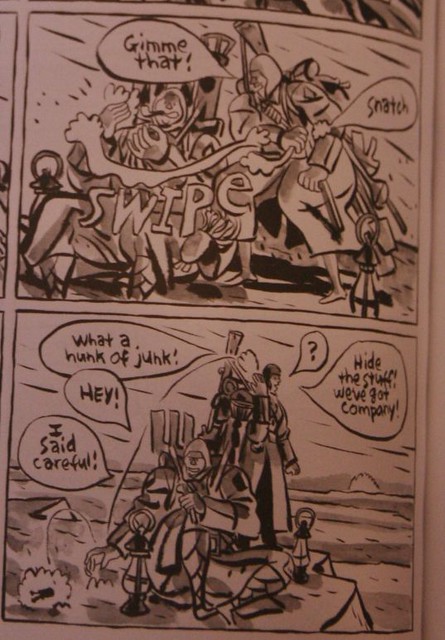
Sam Hiti
Death-Day (Part One)
Laluz Comics, 2010
Since the first pages of this comic it is clear: we face something big. We see grandeur of sweep of the author at least in an increased size of the book and in panels on half a page. The choice of larger format allows the author to draw a giant canvas and the reader to closely examine the content of a page.
«Death-Day» is so pure sci-fi, where it is unclear whether action takes place in our world of future, or on another planet, or in a parallel universe, or all at once, because one does not negate the other. Already in the prologue (and the book besides the prologue made of four chapters - "episodes"), we see a huge battlefield where the army of people and army of orbs (six-fingered monsters, they seems stupid, but taking a number) prepare to attack. Each episode is a separate story line, but closer to the end of the book crossing between subplots becomes clear.

In the first episode, despite its seemingly large scale, the action is mainly concentrated in the headquarters of the Earth officers, who command the earth's army, following instructions of the Mother-0, the computer intelligence. Attempts of officers in different ways to stop the advance orbs lead to nothing, the army of the Earth suffers a defeat.
In the second episode, the central in the book, the main protagonist is a cyborg, one-armed man, scarred, with a mental disorder. He becomes the new captain for the squad of six men, whose previous captain died under mysterious circumstances. The new captain is not very ceremony with the soldiers, telling them to forget their names, and instead assigning soldiers to call signs, ranging from the X-1 to X-6. Under the leadership of the mad cyborg squad hunts for the Black Orb. In the third episode their adventures continue, and in the fourth again we are transported for a few years ago, where the battle between humans and orbs is at full blast.

Art style of Sam Hiti in some episodes becomes the main weapon of the author, in others - the main drawback. In large-scale battle scenes, when in the large panels we're looking at crowds of people and fight with the monsters, when scenes appall with their greatness, and fighting people and monsters are so mixed together that sometimes it is difficult to understand who is who in this battle, made in black and white, viscous, the style of art of Hiti is his main strength. Our eyes bury themselves in the battle, and it’s possible that you can look at a panel for a few minutes. This style makes a world three-dimensional. Such a world does not need color, it in itself is dim, this world of death, war, world of men. If there face are shown in large scale, they are either riddled with pain, or thirst for death.
But in other episodes, where the panel contains small number of characters with no special actions, such voluminous style sometimes interferes with focus on the moment. Art blurs the single episode, so do not even always clear what is depicted on the panel. This, for example, prevents in the second and third episode to get acquainted with members of the military detachment: a soldier sometimes is too similar to another one.
«Death-Day» is a multi-layered work, where the emphasis is in world building, not in some kind of hero in particular. Hiti apparently hid several cats in a sack for the subsequent books in the series, but just the first book tells us much about the scale of author’s creation.
No comments:
Post a Comment